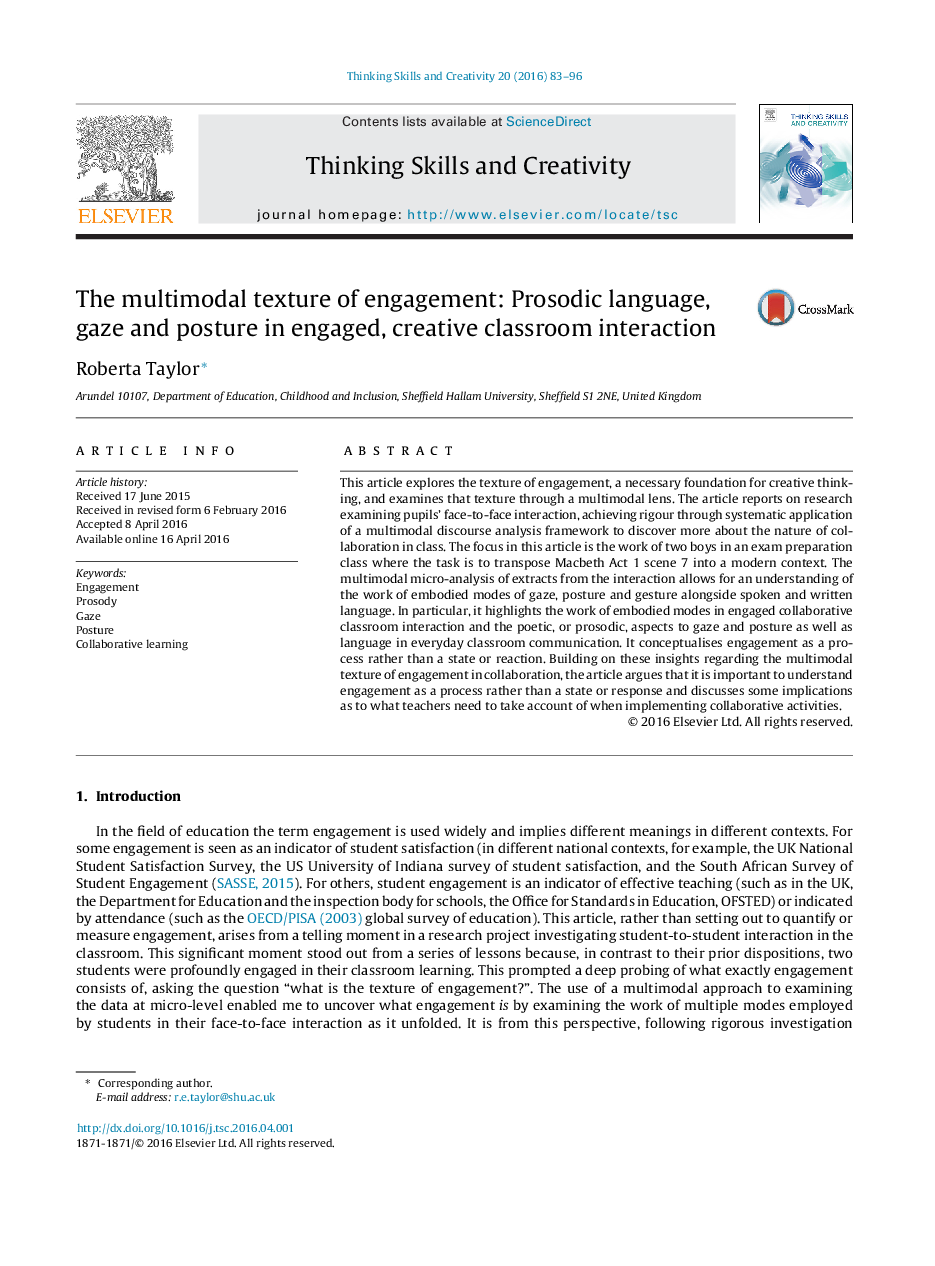| Article ID | Journal | Published Year | Pages | File Type |
|---|---|---|---|---|
| 375529 | Thinking Skills and Creativity | 2016 | 14 Pages |
•Engagement in classroom interaction is proposed as a dynamic process rather than a state or response to pedagogy.•The texture of engagement is exemplified through specific instances of semiotic work of embodied modes of speech, gaze and posture.•Intertextual reference, common purpose, rapport and enjoyment are identified as key aspects to engaged interaction.
This article explores the texture of engagement, a necessary foundation for creative thinking, and examines that texture through a multimodal lens. The article reports on research examining pupils’ face-to-face interaction, achieving rigour through systematic application of a multimodal discourse analysis framework to discover more about the nature of collaboration in class. The focus in this article is the work of two boys in an exam preparation class where the task is to transpose Macbeth Act 1 scene 7 into a modern context. The multimodal micro-analysis of extracts from the interaction allows for an understanding of the work of embodied modes of gaze, posture and gesture alongside spoken and written language. In particular, it highlights the work of embodied modes in engaged collaborative classroom interaction and the poetic, or prosodic, aspects to gaze and posture as well as language in everyday classroom communication. It conceptualises engagement as a process rather than a state or reaction. Building on these insights regarding the multimodal texture of engagement in collaboration, the article argues that it is important to understand engagement as a process rather than a state or response and discusses some implications as to what teachers need to take account of when implementing collaborative activities.
